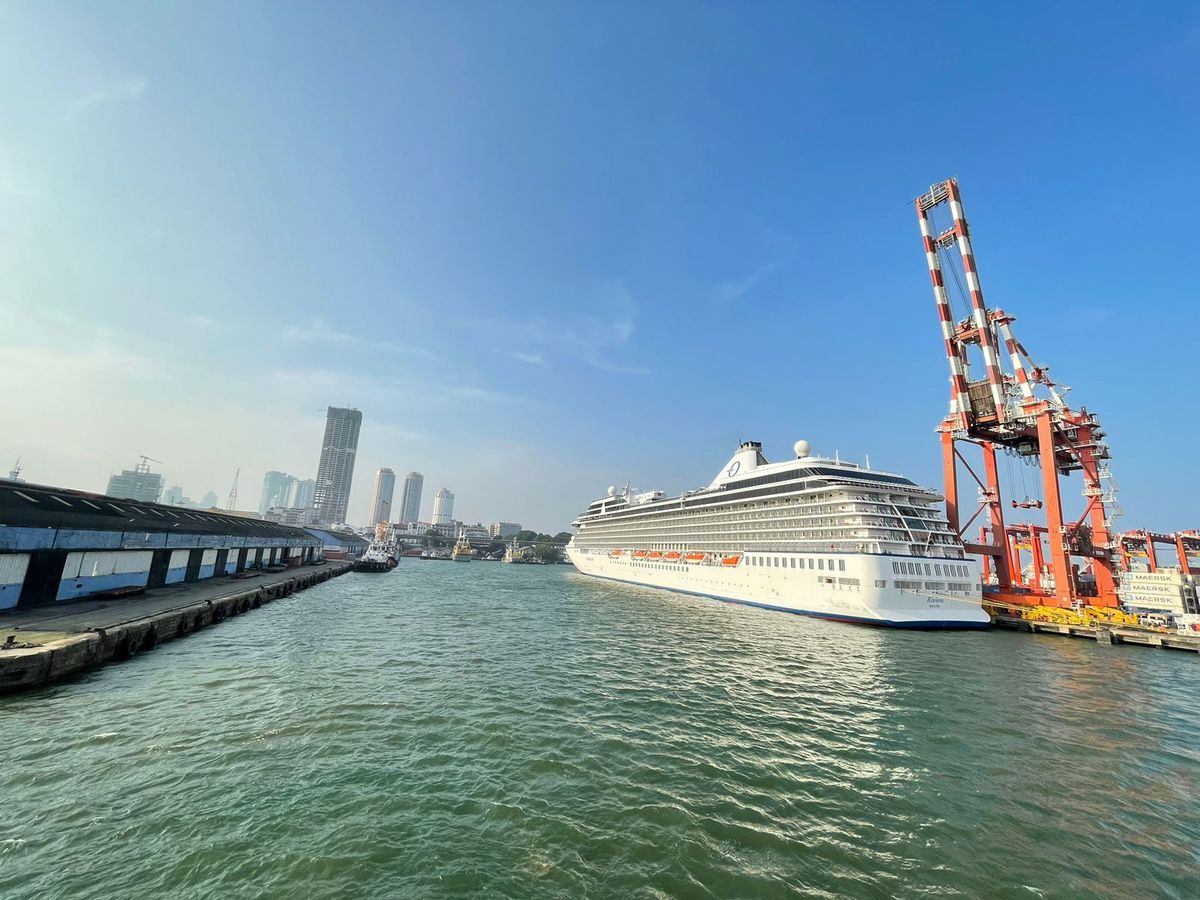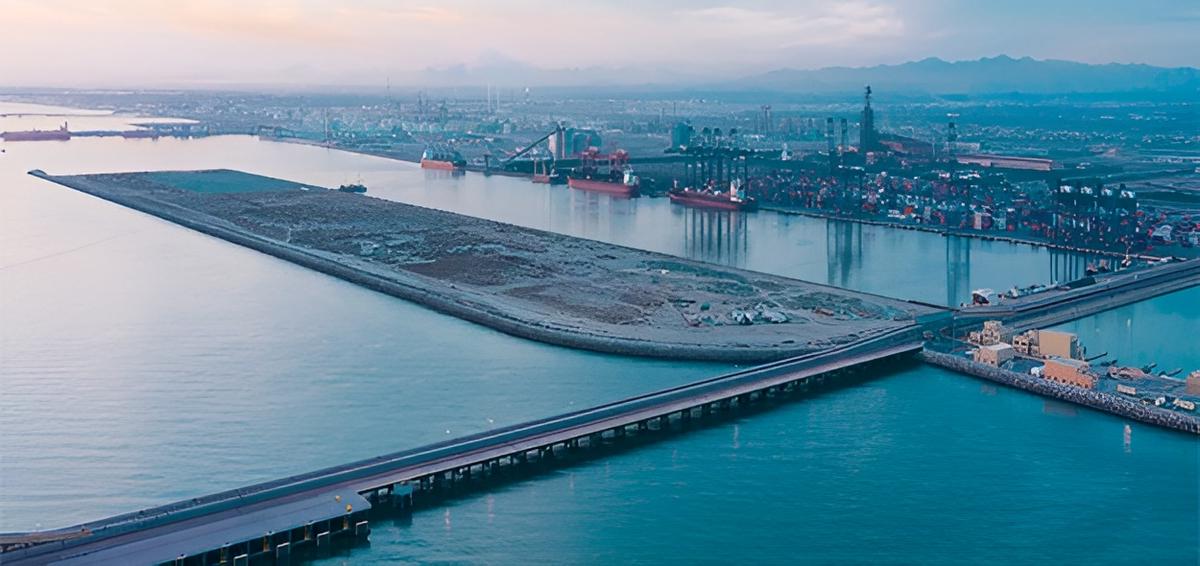East of Suez Fuel Availability Outlook 4 Nov 2025
LSMGO lead times vary widely in Singapore
South Korean ports face weather disruptions
Bunker supply good in Sri Lankan ports
 IMAGE: A cruise ship in Colombo port in Sri Lanka. Lanka Marine Services
IMAGE: A cruise ship in Colombo port in Sri Lanka. Lanka Marine Services
Singapore and Malaysia
Bunker demand in Singapore has remained subdued this week, according to a market source. VLSFO availability has improved, with lead times now averaging 5–10 days — a notable improvement from last week’s uneven delivery windows of four days to nearly two weeks. HSFO supply has also eased, with lead times shortening from 6–11 days to 5–10 days.
In contrast, LSMGO deliveries have become more erratic as several suppliers are struggling due to tight loading schedules, ranging from 5–17 days compared with last week’s shorter span of 4–9 days.
Meanwhile, at Malaysia’s Port Klang, VLSFO and LSMGO remain readily available, and prompt deliveries are possible for smaller volumes, though HSFO supply remains limited.
East Asia
Bunker demand in Zhoushan remains subdued, with most suppliers advising recommended lead times of 5–8 days for VLSFO — largely unchanged from the previous week. HSFO lead times are similar at 5–8 days, while LSMGO lead times have lengthened slightly to 3–6 days from 2–4 days last week.
Fuel availability continues to vary across northern China. Dalian and Qingdao have sufficient VLSFO and LSMGO stocks, though HSFO remains tight in Qingdao. Tianjin continues to face shortages across all fuel grades. In Shanghai, VLSFO and HSFO supplies are limited, while LSMGO availability remains relatively steady.
Further south, conditions are mixed: both VLSFO and LSMGO are in short supply in Fuzhou; VLSFO availability is adequate in Xiamen, but LSMGO remains constrained. Delivery options for both fuels are limited in Yangpu and Guangzhou.
In Hong Kong, lead times across all grades hover around seven days, while Taiwan’s bunker market remains stable, with VLSFO and LSMGO typically available within two days at Keelung, Taichung, Hualien and Kaohsiung.
Bunker demand in South Korea remains stable, with lead times for all fuel grades now around 3–8 days, compared to 6–8 days last week. However, bunkering operations are likely to face weather-related disruptions — from 6–10 November in Busan and Ulsan, and from 8–10 November in Yeosu and Daesan, according to a market source.
In Japan, prompt VLSFO supply remains tight across major ports such as Tokyo, Chiba, Yokohama, Kawasaki, Osaka, Kobe, Sakai, Mizushima, Nagoya and Yokkaichi. LSMGO is generally well stocked nationwide, though immediate deliveries remain challenging in Mizushima.
B24-VLSFO is available only upon request in Tokyo, Chiba, Kawasaki and Yokohama. HSFO availability has tightened across most ports, while Oita is reporting shortages of all fuel grades — VLSFO, LSMGO and HSFO.
In Vietnam, LSMGO and HSFO deliveries at Nha Trang and Quy Nhon require lead times of about three days via truck supply. The same grades are also available through truck delivery at Cua Lo, Nghi Son, Vung Ang, Son Duong and Hon La, a supplier said.
Meanwhile, in Indonesia, VLSFO supply remains steady in Jakarta, Surabaya, Balikpapan, and Cigading, with recommended lead times of 3–5 days. LSMGO requires similar lead times in Jakarta, Benoa, Surabaya and Batam, while HSFO availability is also strong in Jakarta, Surabaya and Balikpapan, a source said.
Oceania
In Western Australia, VLSFO and LSMGO remain readily available at Kwinana and Fremantle, with most suppliers quoting lead times of about seven days. Deliveries are mainly handled by barge from a single supplier, though LSMGO can also be delivered by truck. Strong afternoon winds occasionally disrupt bunkering operations, a source noted.
In New South Wales, VLSFO is available in Port Kembla via both truck and pipeline, with a minimum pipeline delivery of 70 mt and smaller parcels supplied by truck. In Sydney, one barge operates alongside truck and pipeline options at select berths, though its schedule can be affected by naval and cruise liner movements. VLSFO and LSMGO stocks remain sufficient, while HSFO supply is limited. Suppliers generally recommend lead times of about seven days.
Increased cruise activity expected between December and February in Sydney, Cairns, and Darwin may impact vessel schedules.
In Queensland, VLSFO and LSMGO are easily accessible at Brisbane and Gladstone, with lead times of around seven days. HSFO in Brisbane is available only on request, while Gladstone may face occasional weather-related delays. Access to Brisbane’s AAT terminal remains challenging. The port now operates two barges under separate suppliers, both providing VLSFO and LSMGO, with HSFO available on enquiry.
Victoria’s ports of Melbourne and Geelong continue to hold robust VLSFO and LSMGO stocks, though HSFO remains tight, particularly for prompt deliveries. Melbourne currently has adequate HSFO reserves. Both ports are served by a single barge, and bunkering can be delayed by adverse weather conditions in the Bass Strait. A seven-day lead time is typically recommended. LSMGO can also be trucked to smaller ports such as Portland and Port Welshpool, where deliveries usually take 2–3 days.
Overall, Australian ports maintain stable bunker supply, generally requiring lead times of around seven days, though deliveries within 3–4 days are often possible due to ample inventories. Ports with pipeline networks, including Darwin and Dampier, still rely partly on truck deliveries.
In New Zealand, bunker availability remains steady, with VLSFO widely supplied at Tauranga and Auckland. Tauranga provides pipeline access at select berths, while Marsden Point can deliver both VLSFO and LSMGO via pipeline to vessels engaged in cargo operations.
Looking ahead, the cyclone season in northern Australia — from 1 November to 30 April — may intermittently disrupt bunkering schedules, according to a source.
South Asia
In Sri Lanka, a supplier has shortened lead times for all fuel grades at Colombo and Hambantota to around three days from about five days last week.
However, Colombo is experiencing swells exceeding one metre, which are expected to persist through the week and could disrupt bunker operations. According to a source, even swells above half a metre can affect bunkering activities at the port.
Middle East
Bunker operations in Fujairah resumed yesterday after being suspended on Saturday due to rough weather conditions, a trader said.
Despite the restart, prompt supply remains tight across all fuel grades, as several suppliers continue to face low inventories and loading delays, even with muted demand. Lead times of up to seven days are generally advised, reflecting similar conditions at the nearby Khor Fakkan port. Some suppliers can still accommodate urgent deliveries, though usually at a premium, a source noted.
In Iraq’s Basrah, VLSFO and LSMGO remain readily available, while HSFO continues to be limited. Saudi Arabia’s Jeddah has seen an improvement in VLSFO and LSMGO availability, though port congestion is still slowing operations.
Meanwhile, Egypt’s Port Suez is facing acute shortages, with VLSFO, LSMGO and HSFO stocks nearly depleted. Qatar’s Ras Laffan is also experiencing tight availability of VLSFO and LSMGO, while Djibouti reports severe constraints, with VLSFO and HSFO almost exhausted and LSMGO running low.
In contrast, Oman’s ports — Sohar, Salalah, Muscat, and Duqm — continue to maintain steady LSMGO supply.
By Tuhin Roy
Please get in touch with comments or additional info to news@engine.online






